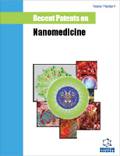Abstract
The review is dedicated to the analysis of modern nanotechnologies, presented in patents and research articles aimed at optimization of cancer diagnostics and treatment. The attention in the review is focused on dendrimers, fullerenes and heterocyclic compounds with antitumor effect. The mechanisms of antitumor activity of nanoparticles and heterocyclic compounds manifest on intracellular, cellular, tissue, organ and system levels. Such diverse effect of nanoparticles and heterocyclic compounds from DNA and mitochondria level to immune system and neurohumoral defense reactions perplexes the development of targeted antitumor agents. The authors propose to pay attention on direct antitumor effect of dendrimers, fullerenes and heterocyclic compounds. The authors of patents and latest research articles consider the positive additive action of nanoparticles (dendrimers, fullerenes) and heterocyclic compounds in combination with antitumor drugs as the most promising direction in cancer therapy. The reason for this is that toxic (adverse) effect of chemotherapy is well known for all living cells (both tumor and nontumor). That is why the search for alternative ways of leveling this effect is being carried out nowadays. The use of dendrimers or fullerenes with chemotherapeutic agents and/or heterocyclic compounds is one of the promising directions. Such combination of nanoparticles with substances allows lowering the concentration of chemotherapeutic drugs, but saves their antitumor effect. The prospectively of this technology is in the reduction of adverse (toxic) effect of chemotherapy without affecting its antitumor potential.
Keywords: Cancer, dendrimer, diagnostic, fullerene, heterocyclic compounds, patent, treatment.
Graphical Abstract
 29
29

